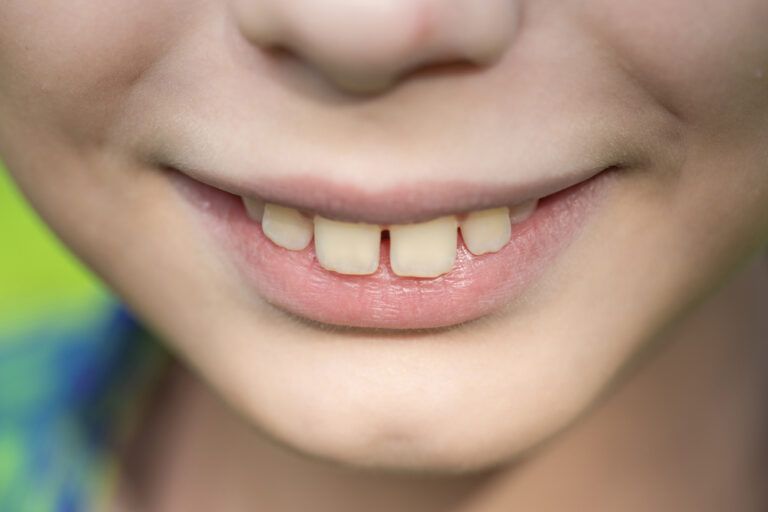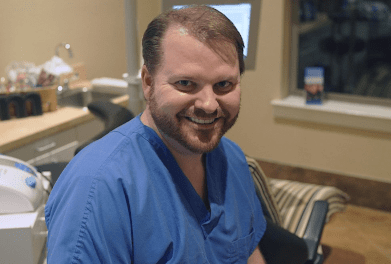As parents, one of the best ways to ensure your child’s healthy development is by keeping an eye on their oral health. While baby teeth are temporary, they play a crucial role in setting the stage for permanent teeth. Misalignments and other orthodontic issues that go unaddressed can affect a child’s overall oral health, as well as their self-esteem and confidence. In this blog from Waco Dental in Texas, we’ll explore nine common orthodontic problems that are often seen in children, helping you understand how these issues can impact their smiles and quality of life.
1. Overbite
An overbite, often referred to as a “deep bite,” is a common orthodontic issue where the upper front teeth overlap excessively over the lower front teeth. When the upper teeth extend too far beyond the lower teeth, it can lead to difficulties in chewing, speaking, and even cause wear on the lower teeth. Over time, an untreated overbite may lead to jaw pain, headaches, and the potential for other dental issues such as tooth erosion.
Additionally, children with overbites may feel self-conscious about their appearance, particularly as they grow older. It’s important to monitor any signs of discomfort or difficulty with biting to prevent further complications.
2. Underbite
An underbite occurs when the lower teeth extend beyond the upper teeth, causing the lower jaw to protrude. This condition can be caused by issues with the growth of the jawbones, genetics, or habits like thumb sucking. An untreated underbite can affect the ability to chew and speak properly, leading to discomfort and an unbalanced bite.
Beyond the functional concerns, children with an underbite may also feel self-conscious about their appearance, especially as they age and become more aware of their smile. In severe cases, an underbite can also contribute to temporomandibular joint (TMJ) pain and headaches.
3. Crowding of Teeth
Crowding occurs when there isn’t enough space in the mouth for all of the permanent teeth to come in properly, causing the teeth to overlap or twist. This can lead to difficulty cleaning the teeth properly, as crowded teeth are harder to brush and floss effectively. Over time, this can increase the risk of cavities and gum disease.
Crowding can also impact the alignment of the bite, potentially leading to issues with chewing and speaking. Furthermore, a crowded smile can make a child feel self-conscious, especially as they reach their teenage years. Parents should be aware of any signs of crowding, particularly when the permanent teeth start to come in.
4. Crossbite
A crossbite happens when the upper teeth sit inside the lower teeth, either in the front or on the sides. This misalignment can cause wear on the teeth, gum recession, and bone loss if left untreated. Crossbites can also lead to difficulty chewing and speaking, as well as an uneven appearance of the smile.
Beyond the cosmetic impact, a crossbite can also lead to jaw problems, as the misalignment puts extra strain on the jaw joints. It’s important to address a crossbite early to prevent further complications in your child’s oral development.
5. Open Bite
An open bite occurs when the upper and lower teeth do not meet when the mouth is closed, resulting in a gap between the front teeth. This can make it difficult to bite into certain foods, leading to chewing problems and difficulty speaking clearly. Children with open bites may also develop a habit of biting their nails, chewing on objects, or thumb-sucking, which can worsen the condition over time.
An open bite can also affect a child’s confidence, as it may make them feel self-conscious about the appearance of their teeth. If untreated, it can lead to functional issues, including problems with the jaw and even headaches or neck pain due to improper biting patterns.
6. Spacing Between Teeth
While some spacing between teeth can be normal, excessive gaps between teeth can be a concern. Gaps may result from genetics, thumb-sucking habits, or the early loss of baby teeth. Although the spaces may not cause immediate pain, they can affect the appearance of your child’s smile and may lead to issues with chewing and speaking.
Spacing between teeth can also lead to problems with oral hygiene, as food and plaque can become trapped in the gaps, increasing the risk of cavities and gum disease. Parents should monitor any unusual spacing as their child’s permanent teeth come in to determine if orthodontic treatment may be necessary.
7. Mouth Breathing
Mouth breathing occurs when a child breathes through their mouth instead of their nose. This can be caused by allergies, nasal congestion, or even habit. When a child consistently breathes through their mouth, it can lead to dry mouth, which increases the risk of tooth decay and gum disease. Additionally, mouth breathing can alter the development of the jaw and the alignment of the teeth, contributing to orthodontic issues like open bites and misaligned jaws.
Mouth breathing can also affect a child’s overall facial development, leading to long-term changes in the structure of the face. If mouth breathing is a concern, it’s essential to address the root cause—whether it’s nasal issues, allergies, or bad habits—in order to improve both oral and overall health.
8. Protruding Teeth
Protruding teeth, often referred to as “buck teeth,” occur when the upper front teeth extend outward from the rest of the teeth. This condition can result from thumb sucking, genetic factors, or habits like nail-biting. Children with protruding teeth are more prone to accidental injuries, such as breaking or chipping teeth, particularly in activities like sports or rough play.
Protruding teeth can also impact self-esteem, as children may feel embarrassed about their appearance. Additionally, this orthodontic problem can lead to difficulties with speaking or biting into certain foods. Addressing protruding teeth early can help prevent both functional and emotional issues in the future.
9. Misalignment of the Jaw
Misalignment of the jaw, also known as a malocclusion, occurs when the upper and lower jaws do not align properly. This can lead to various issues, such as difficulty chewing, biting, or speaking. Misalignment of the jaw can also contribute to pain in the jaw, neck, or head, particularly if it causes uneven pressure on the teeth or jaw joints.
Jaw misalignment can be caused by genetic factors, habits like thumb sucking, or trauma to the face. In severe cases, a misaligned jaw can affect the symmetry of the face, leading to further concerns about a child’s appearance. Addressing misalignment early can help reduce pain and prevent long-term complications, including the need for more extensive orthodontic treatment in the future.
Early Detection Can Make a Difference
While these nine orthodontic issues can be concerning, the good news is that many of them can be addressed effectively with early intervention. Monitoring your child’s oral development, maintaining regular dental checkups, and being aware of any signs of discomfort or misalignment are essential steps in ensuring your child’s smile remains healthy and vibrant. If you notice any of the issues discussed above, don’t hesitate to consult with your family dentist Dr. Martin. Early detection and treatment can make a world of difference in your child’s oral health and overall well-being.
Waco Dental Is Your Dental Care Provider
For patients seeking a family dentist, Dr. Martin can do it all: crowns, bridges, veneers, dental implants, root canals, extractions, dentures, and Invisalign–so you rarely will ever have to be referred to a specialist. For cosmetic and restorative services at Waco Dental, as well as twice-a-year exams and cleaning, call and schedule an appointment today at 254-754-3505.

